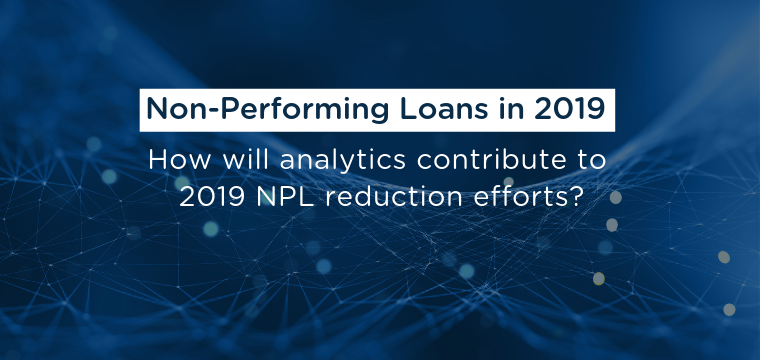How will analytics contribute to 2019 NPL reduction efforts
QUALCO |
Analytic advances rely on the will and ability of organisations to embed techniques in their operations – not only use them as add-on innovations.
The names of exciting new analytics approaches continue to change over the years – from “predictive analytics” to “machine learning” to “artificial intelligence”. Their substance remains the same: extremely useful techniques with great potential, just not in the areas most people expect.
Seen as part of the general business domain of “innovation”, these techniques are kept separate from operations processes – which are viewed as revenue-generating, and therefore sacrosanct. They are not given the support they need to integrate with the business integration. They thus remain the “next big thing”, just as they have for the past decade or so.
As analytics acceptance and adoption improves, we expect more nuanced issues to come to the fore. We do not expect these to be fully addressed in the following year, but we should see at least the beginnings of attempts to deal with them.
In 2019 we will see a continuation of the trend of productising analytics – making it easier for both origination and collections ends of the chain to use analytics and data, for example through simpler user interfaces.
Issues such as GDPR have contributed to this push towards standardising and “productising” analytics processes. However, analytics productisation can only go so far without affecting the business processes requiring analytics input, and the requisite process reengineering has lagged behind.
In 2019 we expect the combined pressures of regulatory compliance and the need for high degrees of automation in advanced analytics to lead to some business processes starting to be reengineered to deeply incorporate the results of analytics, not just as one-off initiatives but as an ongoing, established business practice.
This change will be evolutionary rather than disruptive, contributing to, but not single-handedly causing, efficiency and effectiveness improvements.
As a result of this productisation of analytics, we expect to see more integrated facilities for using the results of analytical processes within operations systems. We expect to see simpler interfaces. These will hide the complexity necessary to deal with local special cases, analytical input and the breadth of asset classes, offering more intelligent, unified front ends that just do what the user wants.
Emerging markets that are establishing a collections servicing industry will be able to leverage analytical and operational advances from other jurisdictions, applying them to portfolios and accounts that have not previously been treated in this way.
The challenge in analytics will be for lenders and servicers to leverage their unique positions – in the case of banks, as the ultimate decision makers on who the customers are, and in the case of DCAs, as the frontline communicators – to improve their analytics situations.
For banks, this will mean focusing on much longer-term analytics, for DCAs, it means finding ways to exploit the short-term but voluminous data collected to extract additional efficiency improvements.
For more information read our E-Guide: 2019 in Collections Markets: What to Expect.

